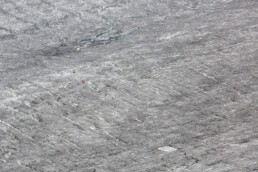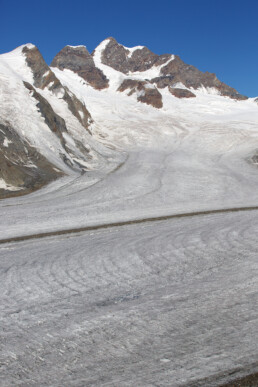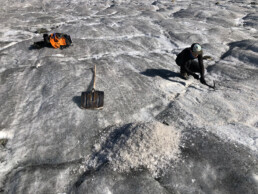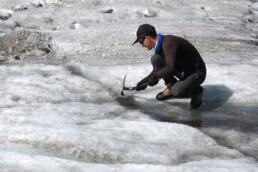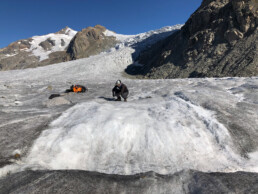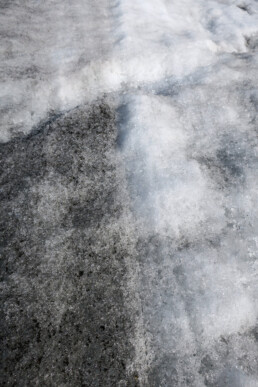Attempt #1 (Cleaning the glacier)
The way up to Konkordia hut proved to be way more intense than I expected: the rain was pouring buckets, my crampons kept getting off my shoes, my backpack weighted tons and the rope was pulling me frontward and backwards, frontward and backwards… The guide was on a hurry; no way to slow down…
Cloudy skies and fatigue most certainly influenced my perception that day: Aletsch glacier appeared to me as a deeply sad place. Before coming up, I had imagined a large stretch of pure, transparent ice; in reality, what I could see was only grey colour: dark matter spreading unevenly across the glacier, gathering into small, darker streams.
The surface of the glacier seemed to be covered with black mud, which – I discovered later – had been analysed by a scientist: a mixture of sediments, unknown organic matter (feces perhaps) and hydrocarbures.
While walking, I kept thinking about glaciologist and scientist Markus Stoffel’s lecture a few days before: according to him, Aletsch glacier would melt away before 2100. I was working out hypotheses about this dark mud, getting to the conclusion that it certainly was accelerating the melting of the glacier, since dark colours absorb more sun’s rays, as we all know.
Therefore, I decided to spend my time on the Konkordiaplatz cleaning the glacier. For two days, Maëlle Cornut and I scraped the surface with our ice axes, to return the ice to its transparency.
We managed to “clean” a 5x5m. square of the glacier – out of 117’600’000 m2.
